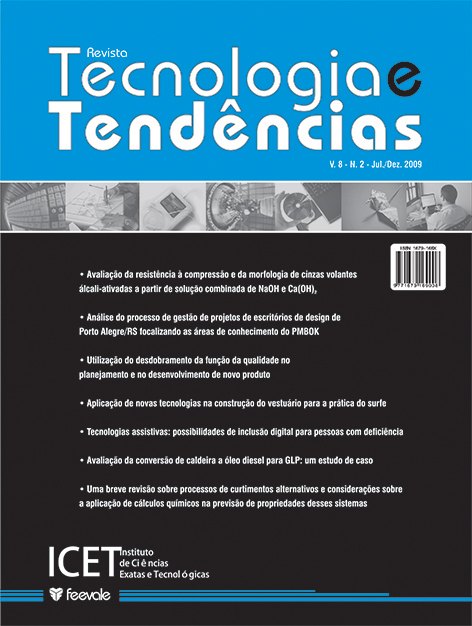Avaliação da resistência à compressão e da morfologia de cinzas volantes álcali-ativadas a partir de solução combinada de NAOH e CA(OH)²
Resumo
A álcali-ativação é uma tecnologia que permite a obtenção de aglomerantes especiais, isentos de clínquer, tendo como matéria-prima principal cinzas volantes. Porém, dependendo da combinação dos materiais precursores e dos ativadores utilizados, poderão ocorrer reações deletérias que conduzam à queda da resistência desses aglomerantes. Assim, este trabalho teve como principal objetivo avaliar a resistência à compressão de argamassas à base de cinzas volantes álcali-ativadas (CVAA), em diferentes idades, a partir de soluções combinadas de NaOH e Ca(OH)2. Três relações molares C/S foram estudadas: 0.05 (M5), 0.15 (M15) e 0.25 (M25). Resistências de 30 MPa foram atingidas pelas amotras M25 na idade de sete dias. Entretanto, nas idades de 28 e 91 dias, as resistências foram de 22 MPa e 16 MPa, respectivamente. Comportamento distinto foi observado para as amostras M5, em que houve aumento da resistência com a idade. Com o auxílio do MEV/EDS, foram observadas alterações na morfologia das CVAA entre a idade de um dia e as idades de 28 e 91 dias, indicando alterações importantes na superfície de fratura das amostras M25 com a idade, o que poderia justificar a queda na resistência à compressão dessas amostras. Portanto, a queda na resistência está condicionada à relação C/S.Palavras-chave: Cinzas Volantes. Álcali-ativação. Geopolímeros.
ABSTRACT
The alkali-activation is a technology that allows to obtain special binders, free of clinker, having as main raw material fly ash. However, depending on the combination of precursor materials and activators used may result in deleterious reactions that lead to reduced strength of these binders. Thus, the aim objective of this study was to evaluate the compressive mechanical strength at different ages of fly-ash-based mortars that were alkali-activated with activating solutions containing a combination of NaOH and Ca (OH)2. Three different CaO/SiO2 (C/S) molar ratios were studied: 0.05 (M5), 0.15 (M15) and 0.25 (M25). Compressive mechanical strength of the order of 30 MPa was achieved by the M25 samples at 7 days. However, after 28 and 91 days their compressive strength was 22 MPa and 16 MPa, respectively. In contrast, the M5 matrix exhibited compressive mechanical strength that increased as the matrix aged. With the aid of SEM/EDS, morphological changes from 1 day to 28 and 91 days were observed in these samples, indicating that the M25 samples had undergone significant changes in microstructure as they aged. These changes may explain the reductions in these samples’ compressive mechanical strength these samples. Therefore, the reducing strength is related to the C/S ratio of the alkali-activated matrices.
Keywords: Fly Ash. Alkali-activation. Geopolymer.
Downloads
Edição
Seção
Licença
• Os autores mantêm os direitos autorais e concedem à revista o direito de primeira publicação com o trabalho licenciado sob a Licença Creative Commons - Attribution 4.0 International (CC BY 4.0).
• Os autores são estimulados a publicar e distribuir seu trabalho online (ex.: em repositórios institucionais ou na sua página pessoal), pois isso pode aumentar o impacto e a citação do trabalho publicado.
--------------------------------------------------------------------------------------------------------------------------------
• The authors retain the copyright and grant the magazine the right of first publication with the work licensed under the Licença Creative Commons - Attribution 4.0 International (CC BY 4.0).
• Authors are encouraged to publish and distribute their work online (eg in institutional repositories or on their personal page), as this may increase the impact and citation of the published work.

